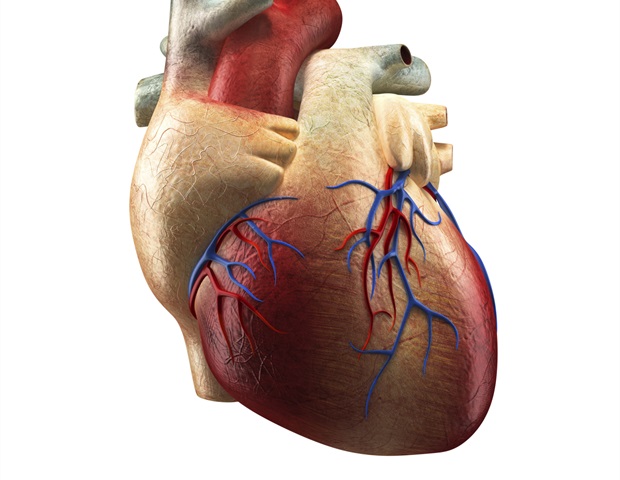
Folks with a small aortic annulus, part of the center’s anatomy the place the left ventricle meets the aorta, who underwent transcatheter aortic valve substitute (TAVR) with a supra-annular self-expanding valve noticed comparable medical outcomes and superior valve efficiency at one yr in contrast with those that underwent TAVR with a balloon-expandable valve, based on analysis introduced on the American Faculty of Cardiology’s Annual Scientific Session.
The SMART trial is the primary randomized head-to-head comparability of the 2 most generally used TAVR gadgets—the supra-annular self-expanding Evolut PRO/PRO+/FX and the balloon-expandable SAPIEN 3/3 Extremely. It is usually the primary to focus particularly on informing system choice for sufferers with small aortic annuli, a affected person group that’s primarily ladies and has been underrepresented in earlier medical trials for TAVR.
We predict it is essential to review this inhabitants, which represents as much as 40% of all sufferers getting TAVR, and it is essential to review ladies, who make up nearly all of the small annulus inhabitants. There was an enormous distinction—32.2 share factors—in one-year bioprosthetic valve dysfunction favoring the Evolut platform. The magnitude of the hemodynamics distinction was bigger than we anticipated.”
Howard C. Herrmann, MD, John W. Bryfogle Professor of Cardiovascular Medication on the Perelman Faculty of Medication on the College of Pennsylvania, part chief for interventional cardiology on the Hospital of the College of Pennsylvania and the examine’s lead writer
TAVR is a process to switch an aortic valve that has grow to be too slim and doesn’t absolutely open, forcing the center to work more durable to pump blood. A brand new valve is inserted by a catheter threaded by a blood vessel, most frequently within the leg, and put in place with out eradicating the present valve.
The trial enrolled 716 sufferers who underwent TAVR at 83 worldwide websites in North America, Europe and the Center East. Sufferers had a valve annulus of 430 mm2 or much less and anatomy appropriate for both the Evolut PRO/PRO+/FX or the SAPIEN 3/3 Extremely. Eighty-seven % of examine members had been ladies and members had been thought of to face a low to intermediate threat of significant cardiac occasions in a baseline threat evaluation.
Half of the members had been randomly assigned to obtain the self-expanding Evolut valve, which is constructed utilizing porcine tissue and supplies that enable the valve to broaden to full measurement when it reaches physique temperature. The opposite half of members obtained the balloon-expandable SAPIEN valve, which is constituted of bovine tissue and inserted inside the center valve by utilizing a balloon to broaden to full measurement.
At one yr, the trial met each main endpoints. Researchers discovered no vital distinction between teams by way of a composite of loss of life, disabling stroke or rehospitalization for coronary heart failure—which occurred in 9.4% of sufferers who obtained the Evolut valve and 10.6% of these receiving the SAPIEN valve. As well as, the Evolut valve was discovered superior by way of valve perform, outlined by way of a composite of structural and non-structural valve deterioration, blood clotting across the valve, an infection of the valve and aortic valve reintervention. This composite valve perform endpoint occurred in 9.4% of sufferers who obtained the Evolut valve and 41.6% of these receiving the SAPIEN valve.
All pre-specified secondary endpoints had been statistically vital in favor of the self-expanding valve, together with the blood stress throughout the valve and the scale of the valve opening. Herrmann mentioned that the supra-annular design of the self-expanding valve doubtless accounts for the superior hemodynamics noticed within the examine, because it allowed for implantation of valves with a bigger opening than the balloon-expandable platform.
Researchers mentioned the outcomes are reassuring by way of the medical outcomes of each valve sorts and famous that additional follow-up may assist to make clear how the 2 gadgets carry out on this affected person inhabitants within the long-term when the distinction in valve perform could have an effect on how lengthy the valve lasts. Researchers will proceed to trace outcomes over the following 5 years.
“The truth that we had comparable medical outcomes at one yr is a vital discovering as a result of lots of people suppose one valve is healthier than the opposite, and right here in a randomized trial, at the least at one yr in a subset of sufferers, the medical variations weren’t completely different,” Herrmann mentioned. “The trial provides us a ton of data. Clinically, at one yr, both valve is affordable, and the outcomes are fairly comparable, though gentle valve leaks and a few measures of high quality of life had been higher with Evolut. Moreover, that is the primary time we get to establish variations between the gadgets which may affect later affected person outcomes.”
Related outcomes had been seen throughout all subgroups, though the researchers plan to investigate further subgroups to find out whether or not valve efficiency or medical outcomes could differ amongst folks in several age teams or amongst folks with completely different comorbidities or annulus measurement. In addition they plan to evaluate measures of valve sturdiness over time, which Herrmann mentioned is turning into extra essential as youthful sufferers are more and more present process TAVR.
The examine was funded by Medtronic, Inc., maker of the Evolut PRO/PRO+/FX.
This examine was concurrently printed on-line within the New England Journal of Medication on the time of presentation.
Herrmann will probably be out there to the media in a press convention on Sunday, April 7, 2024 at 11:15 a.m. ET / 16:15 UTC in Room B203.
Herrmann will current the examine, “Self-expanding Versus Balloon-expandable Transcatheter Aortic Valve Substitute in Sufferers with Small Aortic Annuli: Main Outcomes from the Randomized SMART Trial,” on Sunday, April 7, 2024 at 9:45 a.m. ET / 13:45 UTC.
Supply:
